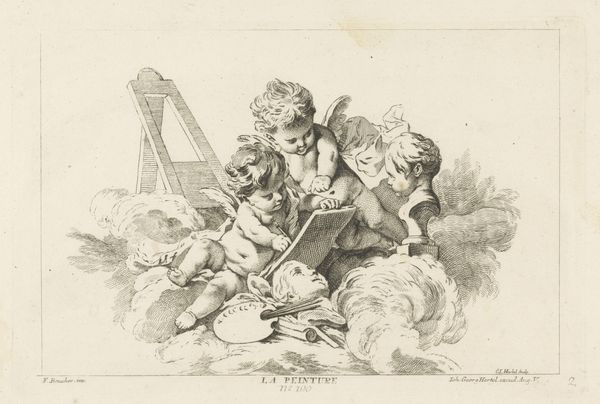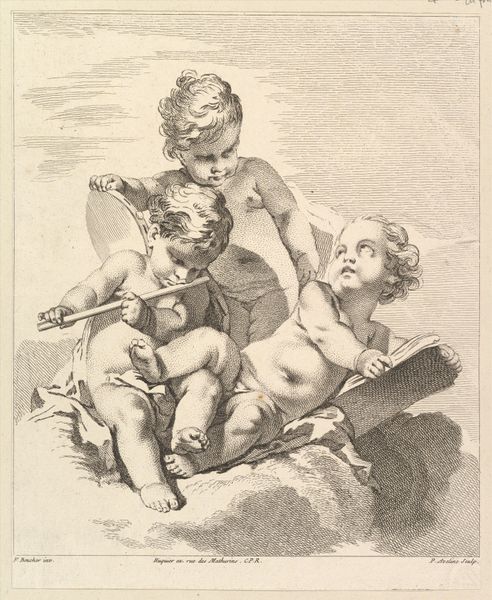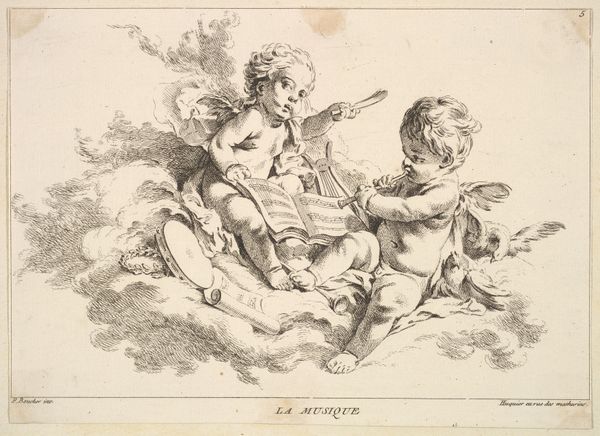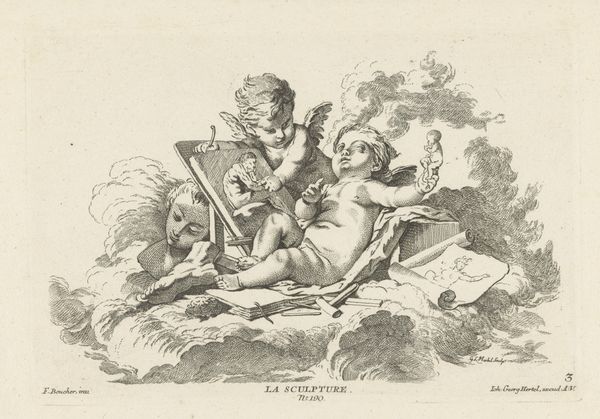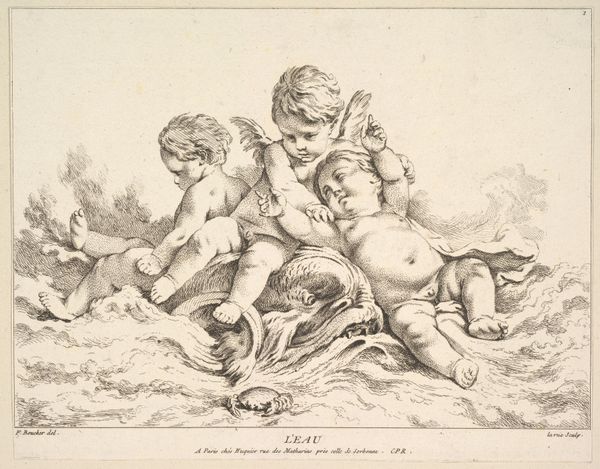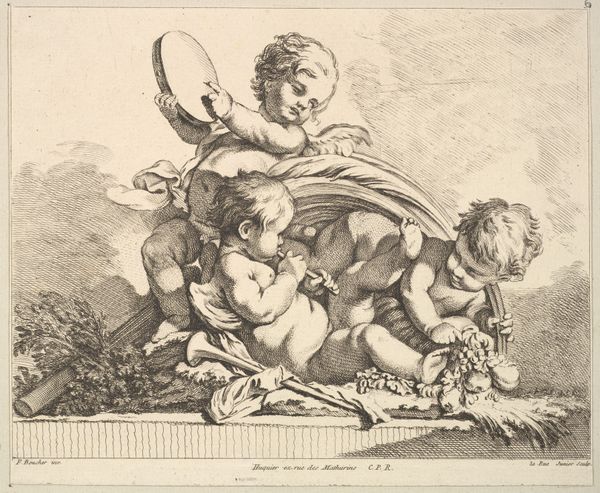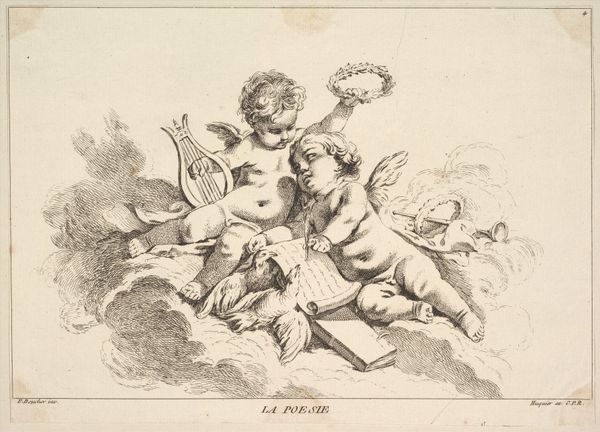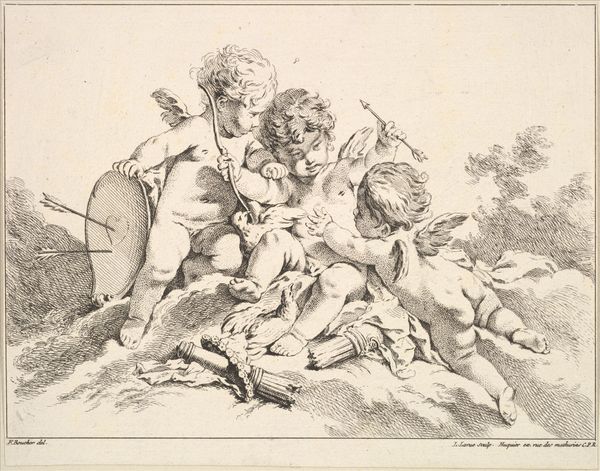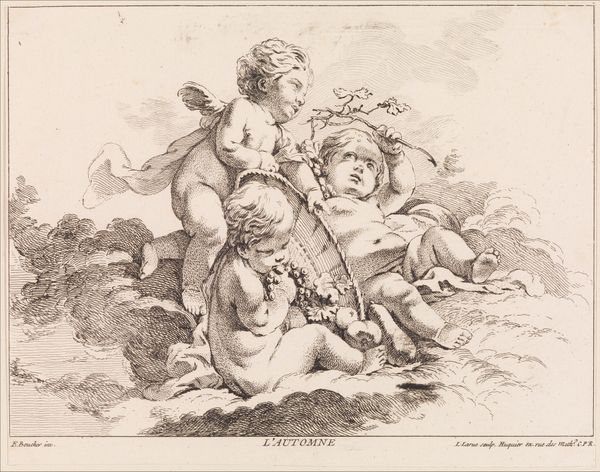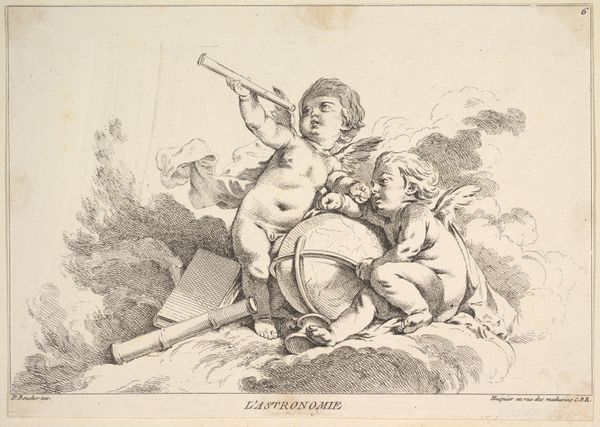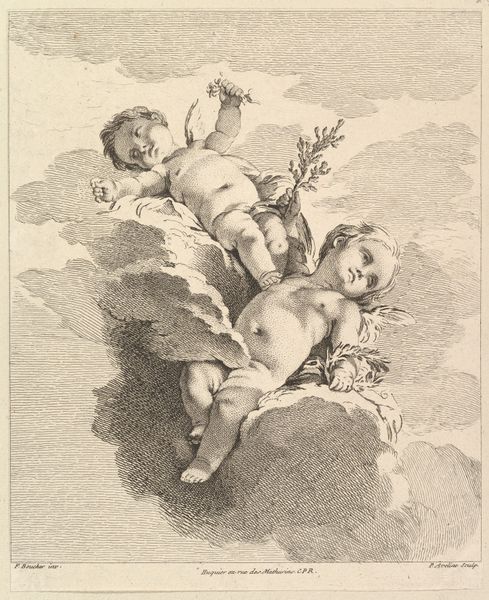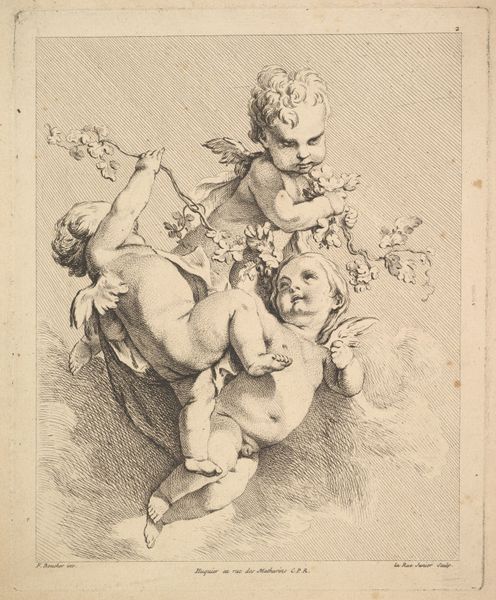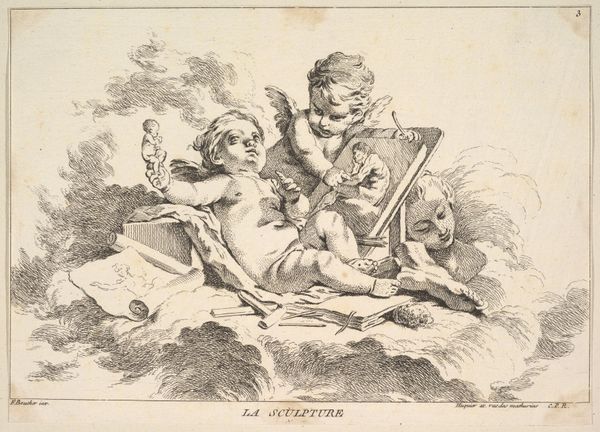
print, etching, engraving
#
allegory
#
baroque
# print
#
etching
#
figuration
#
line
#
genre-painting
#
academic-art
#
decorative-art
#
engraving
Dimensions: sheet: 7 11/16 x 11 in. (19.6 x 27.9 cm)
Copyright: Public Domain
Editor: So this etching, “Painting” by Louis Félix de La Rue, made sometime between 1731 and 1765, depicts cherubic figures surrounded by artists' tools like brushes, a palette, and an easel. It strikes me as almost a whimsical advertisement for the artistic trade. What are your thoughts when you look at this? Curator: I see here an interesting moment in the commodification of art itself. We're presented with a print, a mechanically reproducible image. The material process of its creation – the etching and engraving – makes art accessible to a broader consumer base, doesn’t it? Think about the shift in labor represented by these prints. Editor: That’s an interesting angle. I was focused on the imagery, but what you are saying changes how I see the artwork and that period of art history. Curator: Precisely. What do you make of the artist using cherubs, almost a "cute" presentation? Doesn't it signal a distancing of artistic labor, of production? It removes the human hand, obscures the often laborious means of creating images by linking art-making with innocence and divine inspiration, while selling us something real. Editor: You’re right, the cherubs feel less like a religious symbol and more like… branding. Curator: Exactly! Consider the paper itself, its sourcing and preparation, the economics of ink production in the 18th century… Each element opens a window onto the systems of material exchange and production. How do you see its implications on artistic styles? Editor: Thinking about it in terms of production makes the decorative style stand out even more; it seems deliberately designed to appeal to a consumer base that values embellishment. I guess, art, after all, needs an audience. Curator: Indeed. And understanding how art is *made* is crucial to understanding *why* it looks the way it does.
Comments
No comments
Be the first to comment and join the conversation on the ultimate creative platform.
